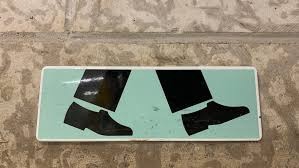City Building Newsletter
The projects bringing The City Plan's vision to life
Infill - Staying Informed about Infill in Your Neighbourhood
The City understands that Edmontonians have questions and concerns about infill in their neighbourhood, and construction taking place near where you live can be unsettling. Check out our information sheet about infill in your neighbourhood so you can know what to expect, how to stay informed about infill, including notifications, and how to report construction complaints. You can also visit edmonton.ca/Infill to learn more and download the information sheet.
While most impacts of construction are temporary and considered typical, residents may still have concerns. We encourage you to contact the builder first, as they may be able to resolve your concern quickly. Following that, if further resolution is needed, use the 311 app, submit a 311 ticket online using the construction site concerns request form or call 311. These are the best ways to make sure your complaint is tracked and acted on as quickly as possible.
Infill plays an important role in helping us respond to population growth and meet the diverse housing needs of both current and future residents. The Zoning Bylaw enables more housing types across the city, giving Edmontonians more choices to live in the neighbourhoods they love.
Downtown - Valley Line West LRT: 102 Avenue bike lane temporary relocation
Upcoming Valley Line West LRT construction in downtown will require the temporary relocation of the 102 Avenue bike lanes to 103 Avenue.
This fall, the City and Marigold Infrastructure Partners (MIP) will install protected bike lanes along 103 Avenue from 103 Street to Rail Town Park, west of 109 Street. The relocated bike lanes will connect to the existing bike network and include wayfinding signage, bike signals, medians and pavement markings. To connect to the 103 Avenue bike lanes, cyclists will be able to use the existing north-south bike infrastructure along Rail Town Park Trail, 106 Street and 103 Street.
The City and MIP appreciate the patience of cyclists and others who will have to adapt their routines. The 103 Avenue bike lanes are expected to be in place until the end of 2027.
To receive updates on construction and the Valley Line project, sign up for MIP’s construction notices or the City’s newsletter.
Pedway - UID program gets help where you need it
Next time you’re in a downtown pedway, check out the Pedway Unique Identifier signs. These signs provide you with a specific number for the pedway you’re using in case you need help from emergency services.
If you have to call 911, give the operator the pedway number, and first responders will know exactly where to find you.

TAKING TO THE STREETS
By Colin Gallant
New street design standards approved this summer
In June, Natalie Lazurko, the city’s director of transportation planning and design, told Taproot about the city’s plans to update its complete streets policy. The changes will apply to new and existing streets, and include more mandatory traffic calming measures and shared-use pathways for some collector roads that connect arterial roadways with quieter streets. City council’s urban planning committee unanimously approved the changes in June. Edmonton was the first city in Canada to adopt the Vision Zero program, in 2015, and Lazurko said she hopes the complete streets updates can put the Vision Zero Street Labs team out of business.
New downtown pedway due in 2026
Construction of another pedway in downtown Edmonton, this one to connect the Royal Alberta Museum, the Churchill LRT station, and the Station Lands development along 103A Avenue with the larger pedway network, began in March 2024. The project is expected to finish by the end of 2026. The project’s current budget is just more than $42 million, according to a posted sign, which also includes streetscape improvements along 99 Street. Its original budget was $26.5 million.
Is this an investment in walkability? Pedways may offer climate-controlled environs for people on their feet, but whether they add to walkability, in the sense of being inviting, safe, or navigable, is up for debate. Pedways take people off the street, diminishing that street’s overall vibrancy. The pedway at the Alberta Legislature was closed from October 2023 to May 2024 due to the number of security incidents that happened within it. As for the downtown pedway network, which is a hybrid of municipal and private ownership, the city is launching the Pedway Unique Identifier Program, which gives first responders a more precise location when responding to calls for assistance by pedway users.
Streets for people
The city has established two entertainment districts in downtown Edmonton that see it close street segments to vehicles on select days (usually Saturdays) and open these spaces up to pedestrians. The first, on Rice Howard Way, launched in summer 2024. The other began this past summer along 104 Street, and is open in conjunction with the Downtown Farmers’ Market. The Edmonton Downtown Business Association oversees both districts on behalf of the city. Taproot reported in June that business owners on the 78 Avenue portion of Happy Beer Street (between 99 Street and 100 Street) are working with the city to explore their own car-free entertainment district. Ward papastew Coun. Michael Janz, whose jurisdiction includes this stretch, said he’d like to see other entertainment districts close to Whyte Avenue, too.
Neighbourhood renewal
The City of Edmonton has operated its neighbourhood renewal program since 1987. The program sees the city assess one quarter of city streets (and curbs and sidewalks) each year to determine which neighbourhoods need repairs, improvements, and preventative maintenance the most. Part of the goal is to make sidewalks more usable for pedestrians, or in some cases, add them where they were previously missing. Residents can check for updates on when their neighbourhoods are up for renewal on the relevant city webpage.
Great policies but middling action?
On Episode 324 of Speaking Municipally, Taproot’s civic affairs podcast, co-hosts Stephanie Swensrude and Mack Male discussed closures to streets due to construction that have recently frustrated west-end drivers. During this, Male offered the lesser-discussed point — that construction disruptions often put pedestrians out far more than they do drivers, and that Edmonton continues to lag on this walkability point versus other cities. “Lots of other cities do construction and maintain access,” he said. “And this is a bigger problem: I find, for pedestrians (there are more closures) than … for cars actually, right? But you can do work without closing sidewalks, and in Edmonton, we just always close sidewalks.”
Edmonton’s City Plan explicitly points to its intention to move Edmonton towards being a city where 50% of all trips are made without private vehicles, including walking.


